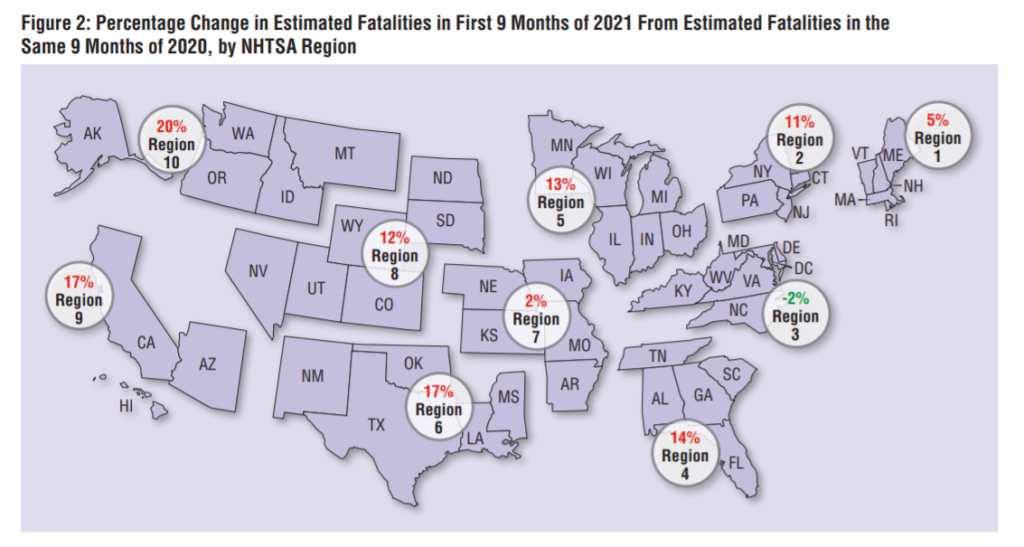Link:https://www.nhtsa.gov/press-releases/traffic-fatalities-estimates-jan-sept-2021
PDF: https://crashstats.nhtsa.dot.gov/Api/Public/ViewPublication/813240
Graphic:

Excerpt:
The U.S. Department of Transportation’s National Highway Traffic Safety Administration released its early estimate of traffic fatalities for the first nine months of 2021.
NHTSA projects that an estimated 31,720 people died in motor vehicle traffic crashes from January through September 2021, an increase of approximately 12% from the 28,325 fatalities projected for the first nine months of 2020. The projection is the highest number of fatalities during the first nine months of any year since 2006 and the highest percentage increase during the first nine months in the Fatality Analysis Reporting System’s history.
The new estimates come days after the U.S. Department of Transportation released the federal government’s first-ever National Roadway Safety Strategy, a roadmap to address the national crisis in roadway fatalities and serious injuries.
Publication Date: 1 Feb 2022
Publication Site: NHTSA


